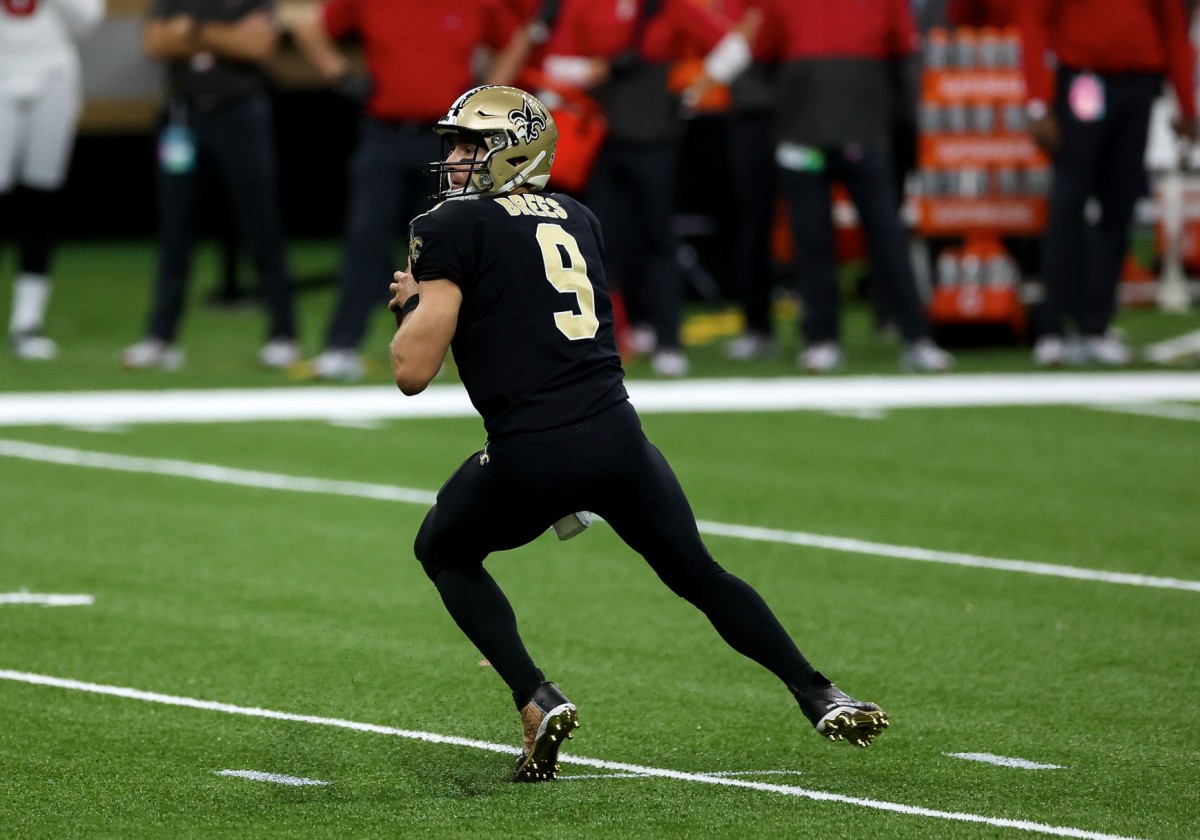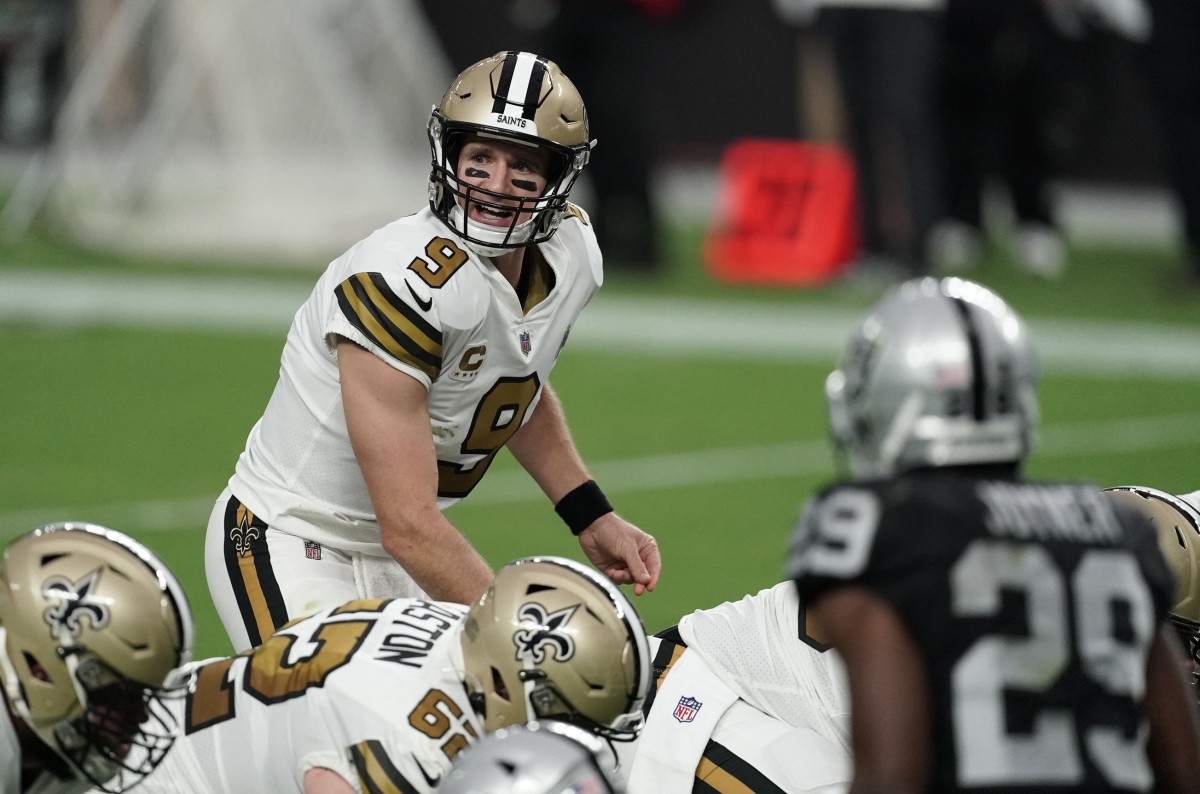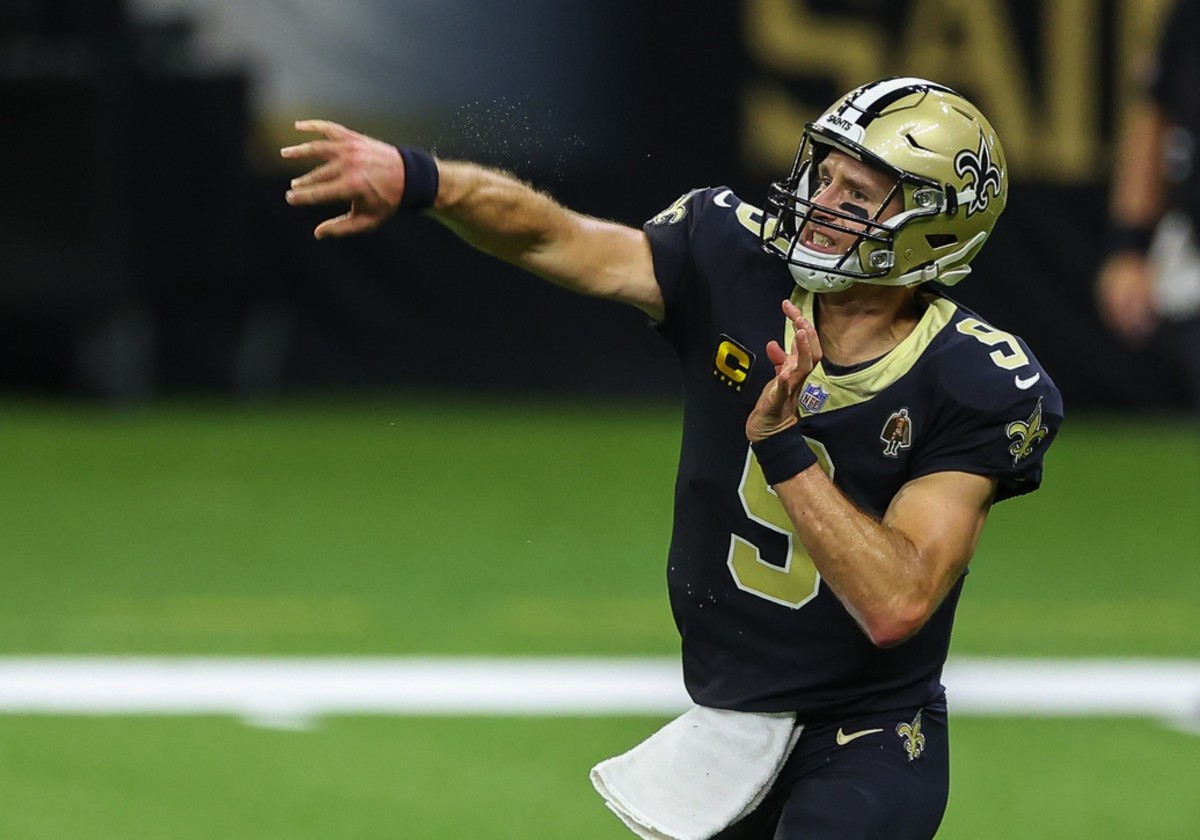The Analytics: Why Drew Brees is not "Drew Brees"
The analytics could shed light behind the issues for Saints quarterback Drew Brees is battling early in 2020. Written by Saints News Network's intern, Andrew Gullotta. Andrew is the host of the Who Dat Discussion.

After a disappointing loss to the Las Vegas Raiders in Week 2, there is one player integral to the Saints' success that has started out of the gate shaky in the 2020 season: QB Drew Brees. After 20 years of legendary quarterbacking, Brees may be showing signs of aging that goes beyond just yards, touchdowns, and interceptions.
If he’s going to lead the Saints to a Super Bowl victory in his possible swan song season, Brees must solve these integral problems that have plagued his early season performances.
One advanced statistic that stands out is how Brees’ time to throw has risen in 2020, while his average completed air yards have shrunk. In 2019, the Super Bowl XLIV MVP took an average of 2.57 seconds to throw the ball. Also last season, Brees completed an average of 5.2 yards through the air. Through the first two games of 2020, he takes a tenth of a second longer to throw the ball (2.67) and throws 1.6 yards less through the air.
Since Brees' time to pass is longer and throwing shorter distances opposing defenses may be taking notes. The fraction of a second may not seem like a lot of time, but the differences between a completed pass downfield and an interception are small.

These stats convey that Brees’ timing is just a "little off," which is expected after a shortened training camp and no OTAs, mini-camps, and preseason games. Anticipate Brees to correct his timing issues as the season progresses, leading to the success similar to previous seasons.
Brees timing maybe a rudimentary fix. However, there is one combination of analytics that is more problematic for the 41-year-old quarterback. Number 9 has only completed 64.7% of his passes and sits at 21st in the NFL for quarterbacks. In 2019, he led the league in completion percentage at 73.1%. Also, Brees has the lowest percentage of aggressive pass attempts for 8.8%. This statistic is defined as a pass to a receiver in tight coverage (one yard or less).
The standard pass play for Brees is the high percentage throw to open receivers within 10 yards. Typically, his completion rate should be higher. Currently, the difference between his expected and actual completion percentage is the third-lowest in football at -8.4. These numbers would cause concern for the Saints as Brees is known for his master marksmanship.
Last season, Brees had the highest expected completion percentage at 68.0%. However, he also had the second-highest difference between his expected and actual completion percentage of 6.3%. Even though he was attempting very high percentage throws, he was still completing passes way above his expected rate. This elite efficiency supported Brees' name being mentioned in the top QB discussions, even as a 40-year old.

Many analysts and fans are criticizing Brees for not throwing deep passes. He's not finding the same success this season because of his shaky completion percentage on short/intermediate, high percentage throws.
This dip may have to do with the timing issue mentioned above, but the greater fear is that Brees’ legendary accuracy may be fading. His 2020 completion rate for throws less than 10 yards or fewer is more than 10% lower than in 2019. The 20-year pro inconsistency in shorter pass completions magnifies the inaccuracy and highlights the lack of a deep pass tries this year.
These problems did not exist for Brees in the past; it’s hard to imagine he will not regain his pin-point accuracy at some point. And with the Green Bay Packers paying a visit to the Mercedes-Benz Superdome in Week 3, it will be a welcomed sight if he returns to his expected elite play. Besides, Brees will make the Saints' job a lot easier to be victorious if the "Old Brees" shows-up for battle against Aaron Rodgers and the Packers on Sunday night.
